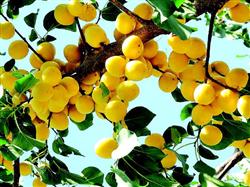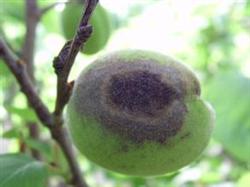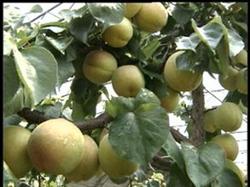Transformation of low-yield apricot orchard

The characteristics of low-yield gardens include low-yield young tree orchards and low-yield old tree orchards. The apricot orchard whose output is lower than the average yield of this area year after year, or lower than the output of similar orchards around it, is a low-yield orchard. The main results are as follows: 1. in the young tree orchard in the full fruit stage, the tree potential is weak, the crown is small, the expansion is slow, the branch quantity of the extended branch is small, and the fruiting branch is thin and weak. 2. The young trees grow vigorously, but the tree structure is unreasonable, the proportion of all kinds of branches is not coordinated, the backbone branches on the trunk are erect and strong, the fruiting branches and lateral branches are few and thin, although they blossom more every year, they bear less fruit. 3. The tree potential of the old tree garden is weak, there are almost no developed branches and extended branches, the main branches in the middle and lower part of the crown are bare, most of the fruiting branches are on the periphery and top of the crown, the flower buds of the fruiting branches are dense, the proportion of incomplete flowers is large, and the withered branches and old branches are drooping. Diseases and insect pests are very serious. Second, the steps and methods of the transformation of low-yield gardens 1. Improving environmental conditions, restoring tree potential and promoting the renewal of old trees are the basic measures to increase yield. The main results are as follows: (1) after deeply turning and expanding the tree plate and applying sufficient basal fertilizer in November, after fruit harvest in autumn, ditches are dug around the crown or between rows, the ditch is deep 60??80cm, wide and moderate, and the topsoil and subsoil are open. When backfilling, each plant is treated with 50??100kg farm fertilizer, and those lacking fertilizer sources can be put into a certain amount of mature straw or weeds and fallen leaves, and then backfill topsoil and compaction, which can improve soil fertility, structure and permeability. Be careful not to hurt the big root when digging trenches. (2) where there are conditions for irrigation and soil moisture conservation, water can be irrigated at least twice before flowering and before winter. When there is no irrigation, tree plates can be used to cover grass, straw and plastic film, which can also preserve soil moisture and inhibit the growth of weeds. Organic matter such as covered straw can be buried in the ground after 1-2 years of decay, which can increase the content of soil organic matter. After irrigation or rain, intermediate ploughing and weeding should be carried out to loosen the surface layer of soil, and the suitable depth of intertillage should be 10cm. In mountainous areas, after thawing in spring, shallow ploughing and shallow raking between rows can increase the soil temperature and preserve soil moisture and promote root activity, and green manure can also be planted between rows. (3) rational fertilization of base fertilizer can be combined with deep ploughing. During the growth period, the main fertilizer before topdressing was available nitrogen fertilizer; the main fertilizer after anthesis was nitrogen mixed with a small amount of phosphorus and potassium fertilizer; the fruit promoting fertilizer was mainly available potassium fertilizer, which had a good topdressing effect about 15 days before fruit harvest; and the postharvest fertilizer was mainly available phosphorus and potassium, combined with a small amount of nitrogen to ensure branch fullness and flower bud differentiation in the later stage. (4) the management of the low-yield garden to eliminate diseases and insect pests is extensive, the old trees are weak, and the diseases and insect pests are serious. The common ones are red-necked longicorn beetle, apricot ball scale, Dendrolimus punctatus, boat caterpillar, leaf roll moth and so on. Active and effective control measures should be taken according to the types and occurrence regularity of diseases and insect pests. 2. Reasonable pruning, rejuvenation and renewal (1) weak regeneration removes the 3-year-old backbone branches in the upper part of the crown, and prunes the remaining branches, removes withered branches, weak flower branches, and retracts some fruiting branches. (2) intensity renewal apricot orchard with good management conditions, exuberant tree momentum and strong trees of about 30 years old can adopt one intensity to retract all backbone branches and fruit branches, promote new branches, and cooperate with summer pruning, a new crown can be formed and the effect is better. 3. The poor change of improved varieties is one of the main reasons for the low yield of apricot trees. For the younger trees, the high-yield and high-quality varieties suitable for local growth can be selected, and the one-time multi-head high grafting technique can be adopted on the backbone branches of the middle and upper parts of the crown to replace the new varieties. The old tree needs to be rejuvenated and replaced with high grafting on the sturdy branches. 4. Releasing bees during flowering and artificial pollination in orchards (honeybees or horned forehead wasps), put 1 box per mu, if using mu wasps, it is suitable to have 100 bees per mu. It can also be pollinated artificially. In addition to artificial point pollination, a sprayer can be used to spray pollination at full flowering stage, which can promote pollination and fertilization and improve fruit setting rate.
- Prev

The management of apricot trees after fruit picking should keep up
Symptoms Apricot brown rot has two symptoms. A harmful near-mature fruit, initially forming dark brown, slightly depressed round lesions, then rapidly expanding, soft rot, with yellow-brown velvety particles, whorled or irregular, damaged fruit more early fall off, rot, a few hanging on trees to form dead fruit. Another harmful fruit...
- Next

Cultivation techniques of Apricot
The main results are as follows: 1. The garden should be built on sandy loam soil with deep and fertile soil layer and can be irrigated and drained, but not suitable for waterlogged land, heavy saline-alkali land and continuous cropping land. Pollination trees should choose varieties with the same flowering period or earlier than the main varieties, and the ratio of pollinated varieties to main varieties is generally 1:6-8. Planting density plain plant row spacing 3 m × 4-5 m, in.
Related
- Moge, come on! The staff of the peasant association in the producing area of cantaloupe were frightened when the crowd gathered.
- Causes and Solutions of low Fruit setting rate of Apple
- Symptoms and control measures of passion fruit virus disease
- Fruit growing lesson: how do apple orchards keep high yields?
- Can you build orchards in the mountains? What are the pros and cons?
- How to manage the coloring period of Crisson grape?
- This paper introduces the processing technology of two kinds of fig products.
- How much is a month for retired teachers in rural areas by 2020?
- How can strawberry planting increase sugar content? We should pay attention to management in many aspects.
- What are the cultivation techniques on how to improve the yield of golden fruit?

